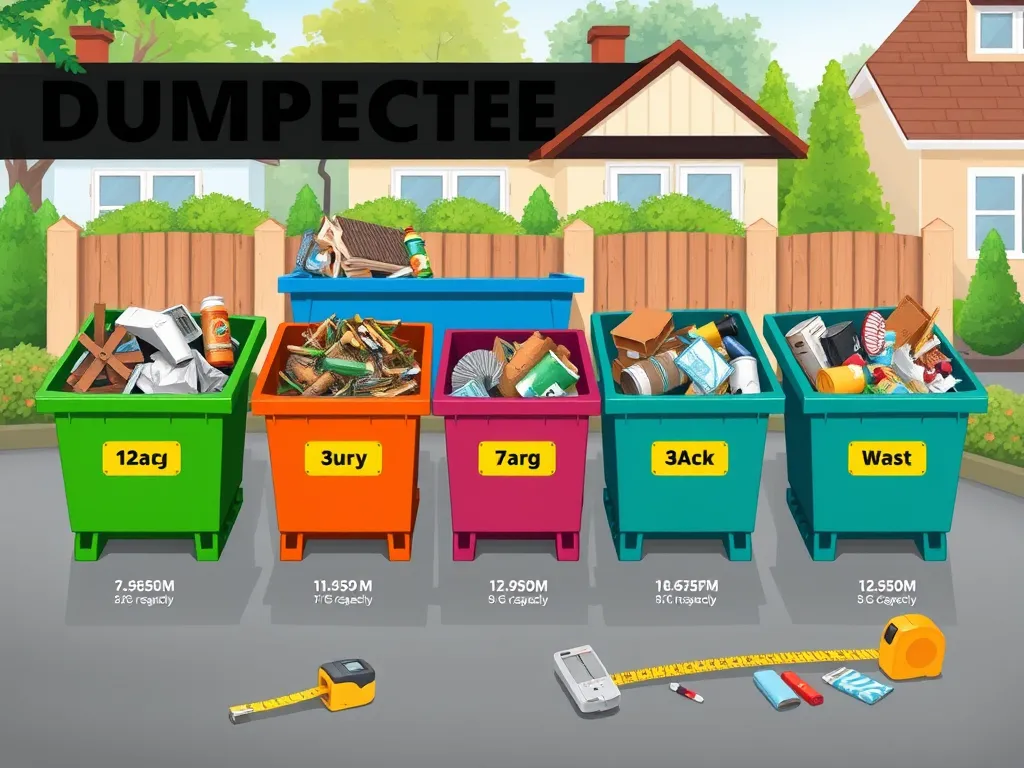Ultimate Guide to Choosing Dumpster Size for Your Needs

Conclusion: Making an Informed Decision
In conclusion, choosing dumpster size is a critical component of effective waste management for any project. Understanding the different sizes, evaluating project needs, and considering cost implications as well as environmental effects can guide you to the best decision. Avoid common pitfalls and make a strategically informed choice to facilitate a smoother workflow and a more successful project outcome.
When planning your next construction project, understanding How to Estimate the Right Dumpster Size for Your Construction Site can save both time and money.
When embarking on a project, it’s crucial to plan ahead, and that includes the systematic process of choosing dumpster size. With a multitude of options available, making an informed decision can save you time, money, and hassle in the long run. By understanding the different sizes available and the specifics of your project, you can make an effective choice.
In this article, we’ll discuss the critical factors to consider when choosing dumpster size, the impact of these decisions on your project, and some common pitfalls to avoid. Knowing how to choose the right dumpster size will ensure that you handle your waste properly and complete your project smoothly.
Choosing dumpster size is not just about finding one that fits your needs; it’s about finding the perfect fit between cost, efficiency, and environmental responsibility. By familiarizing yourself with the available sizes and making analytical decisions, you can streamline your waste disposal process and focus more on the project at hand.
Let’s delve into the details of choosing dumpster size, beginning with understanding the various dumpster sizes and their specific applications.
Understanding Dumpster Sizes
Common dumpster sizes typically range from 10 to 40 cubic yards. Smaller dumpsters, such as 10 or 15-yard options, are ideal for minor projects like garage cleanouts or small landscaping jobs. Medium-sized dumpsters, around 20 yards, are well-suited for home renovation or significant decluttering tasks. For larger projects, like major remodeling, commercial construction, or extensive landscaping, 30 to 40-yard dumpsters are often necessary.
It's important to choose a dumpster size that aligns with the particular waste material and volume expectations of your project. For instance, if you’re clearing out an attic or garage, a smaller dumpster might suffice, whereas a larger dumpster would be better if you're undertaking a construction project that produces a considerable amount of debris.
To measure your project needs, calculate the estimated volume of waste you'll generate. Start by reviewing the specifics of the job: How much debris do you anticipate? Will it consist of lightweight materials or heavier items? Knowing the characteristics of your waste will help guide your dumpster size choice.
Factors Influencing Dumpster Size Choices
One major factor impacting your choice of dumpster size is the type of waste materials you'll be throwing away. Heavy materials like concrete and asphalt will require a smaller dumpster since they weigh more and take up less volume. In contrast, lighter materials such as cardboard and yard waste may allow for larger volumes in the dumpster.
The duration of your project can also play a role in your dumpster size decision. Short projects with brief cleanup needs may benefit from a smaller dumpster, while longer projects might necessitate more ongoing waste disposal capabilities, which could warrant a larger size or even multiple dumpsters.
Another critical aspect to consider is the expected volume of debris. It’s essential to be realistic and comprehensive in estimating how much waste your project will generate. An underestimation often results in additional costs and logistical challenges later in the project.
Cost Considerations for Dumpster Sizes
Cost is always a consideration when choosing dumpster size. Generally, the larger the dumpster, the higher the rental cost. However, it’s important to weigh the costs against potential overage fees that could arise from selecting too small a dumpster and needing a second rental.
Estimating your budget beforehand will provide a clearer picture of what size dumpster you can afford. Include factors such as the rental price, weight limits, any potential additional costs, and the volume of waste you anticipate producing.
Additionally, if you opt for an oversized load, be prepared for extra fees that many dumpster rental companies may charge. This can significantly increase your overall project budget if not factored in during the planning stages.
Environmental Impact of Dumpster Sizes
The size of the dumpster you choose also influences your project's environmental impact. Larger dumpsters can facilitate better recycling practices, as you may have more space to separate recyclable materials from general waste. This helps minimize the amount of waste sent to landfills.
Reducing landfill waste is another critical aspect of selecting the right dumpster size. By accurately estimating your waste volume and choosing the appropriate dumpster, you can ensure that debris is appropriately contained and doesn’t contribute unnecessarily to landfill overcrowding.
Moreover, eco-friendly disposal practices can be better executed when you have the right size dumpster, as it allows for more straightforward management of waste, promoting recycling and responsible disposal in alignment with environmental regulations.
Common Mistakes in Choosing Dumpster Sizes
One of the most common mistakes people make when choosing dumpster sizes is selecting a dumpster that is too small. This often results in needing to rent another one, which can be both costly and inconvenient, slowing down your project timeline.
Underestimating waste volume is another prevalent mistake that can lead to complications during project execution. It’s essential to be conservative in your estimates and plan for more capacity than you might think you need.
Lastly, misjudging project timelines can impact dumpster size choices. If your project runs longer than intended, you might find yourself with insufficient waste disposal capacity, again necessitating additional rentals and costs.
